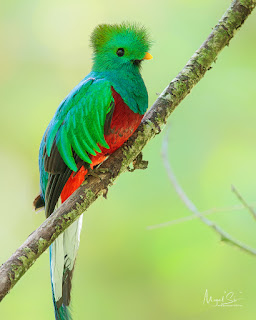At the lung, not the heart, of the city there's a natural park, the only wildlife refuge in the world located within city boundaries. It is the Parque Natural Metropolitano simply known as PNM or in english if you like: Metropolitan Natural Park.
This is the cheapest and easiest way to look for wildlife in Panama city and its surroundings. The entrance fee for locals and residents is only US$1 and for foreigners US$3.
This is actually one of my preferred places to do bugs and insects photos but also is a nice place to go bird watching and find interesting species. I've learned in my short time in this business that PNM is a place full of surprises.
Next you will find a selection of birds and animals photos I've done there recently to show you that.
Gray-lined Hawk (Buteo nitidus) is uncommon in most country to 1,200 m. Found in open and scrubby areas, relatively open woodland and forest edge.
Boat-billed Heron (Cochlearius cochlearius) - immature. Uncommon on Panama's Caribbean slope, local on Pacific slope in lowlands. Usually found in mangroves and along rivers and marshes.
Hoffmann's Two-toed Sloth (Choloepus hoffmanni) is a species of sloth from Central and South America. It is a solitary, nocturnal and arboreal animal, found in mature and secondary rainforests and deciduous forests.
American Kestrel (Falco sparverius) according to Birds of Panama book by G. Angehr is an uncommon transient and winter resident and rare as a resident breeder, and found in open areas. Apparently is also found in summer like this individual that was local in the PNM for several weeks.
Collared Forest-falcon - adult pale morph (Micrastur semitorquatus). Is uncommon on both slopes to 1,950 m. Found in lower levels of forest.
Brown-throated Three-toed Sloth (Bradypus variegatus) sleep 15 to 18 hours every day and are active for only a few brief periods, which may be during either the day or night.
Rhinella alata's distribution is poorly documented; type locality is in Panama and population currently allocated to this name is in Venezuela north of the Orinoco River, possibly in northern Colombia.
Lance-tailed Manakin - immature male (Chiroxiphia lanceolata) is common on Pacific slope westward to western Darién on Caribbean only in central Canal Area. Found in lower levels of dry forest, woodland and scrub.
Red-capped manakin - male (Ceratopipra mentalis) is found primarily in humid forest and second growth woodland.
Rosy Thrush-tanager - male (Rhodinocichla rosea) has a very limited distribution with populations in northwestern Mexico, Costa Rica, Panama, Colombia and Venezuela. It's pretty rare to see it for its distribution and terrestrial habits while feeding arthropods and small reptiles looking among the leaf litter. Fairly common on Pacific slope and Caribbean in northern Coclé to eastern Colón provinces. The best option to take a picture of this species is when perched like this, I found a couple but the female was shy.
Collared Aracari (Pteroglossus torquatus) is a toucan, common resident breeder in lowland forests and slightly more open woodland. They usually occur in groups. This guy was within a group of three individuals.

.jpg)
.jpg)

.jpg)





.jpg)



Comments
Post a Comment